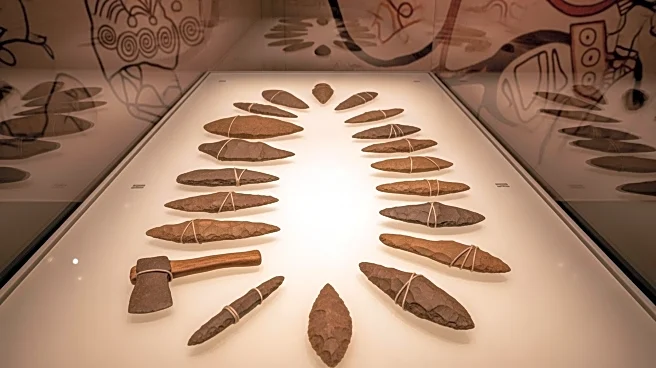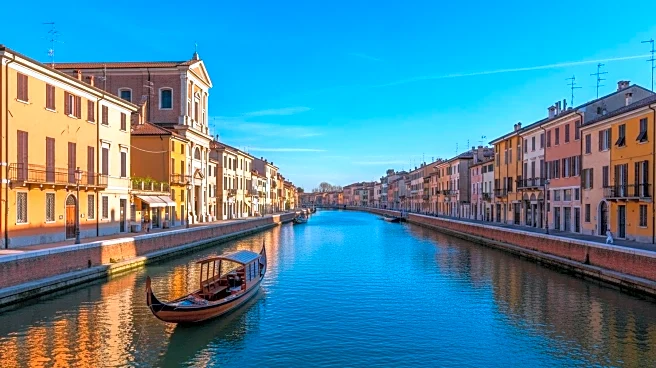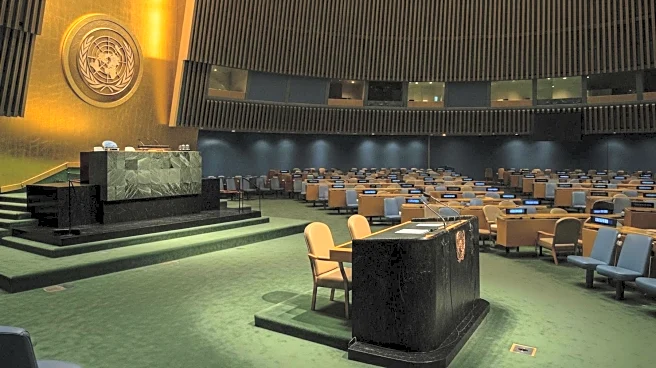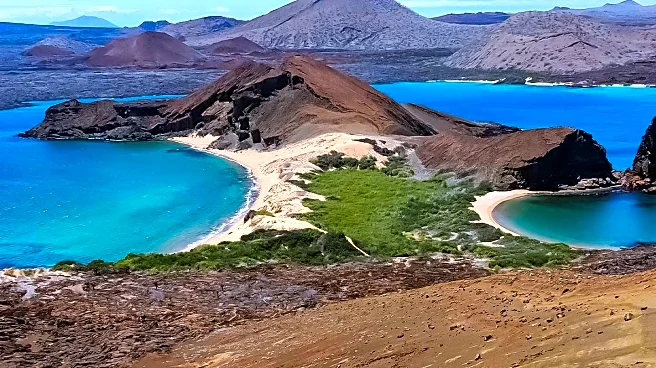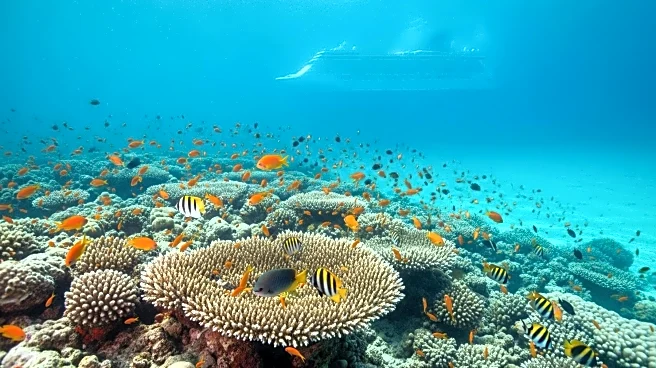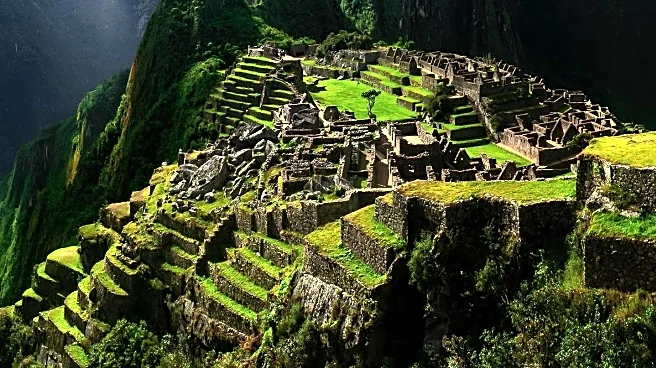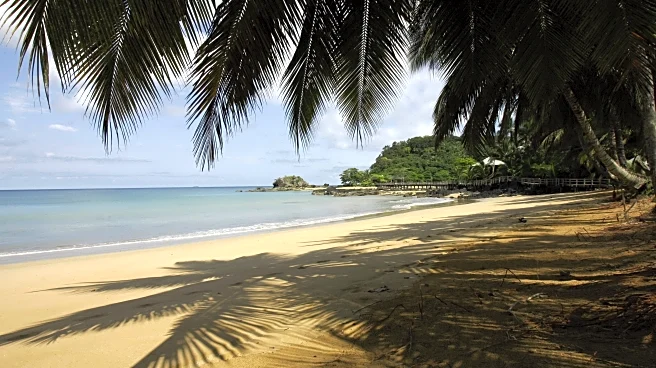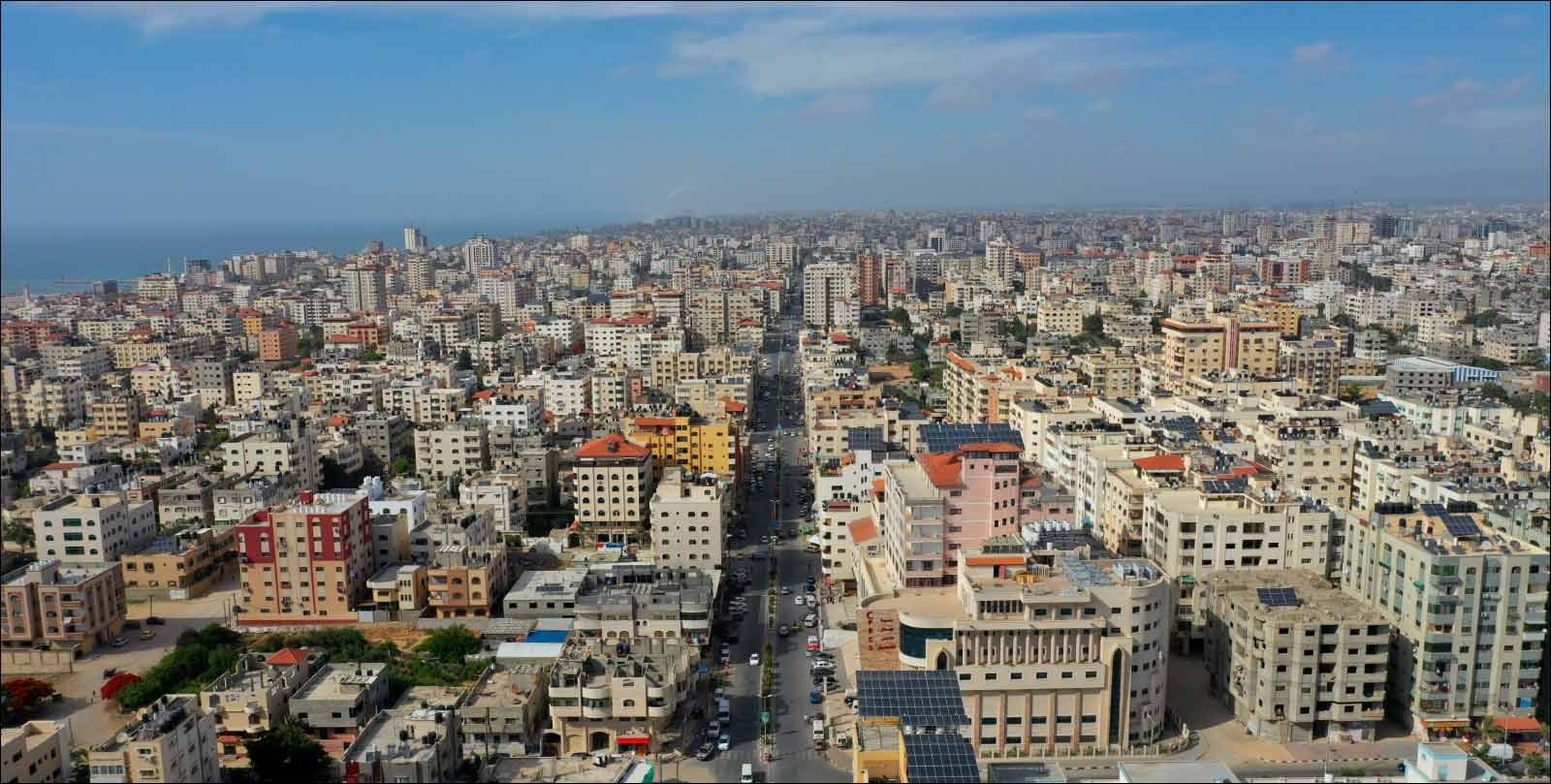What is the story about?
What's Happening?
A site in Sharjah, UAE, known as the Faya Palaeolandscape, has been designated a World Heritage Site by UNESCO. This site is significant for its evidence of early human migration out of Africa, challenging previous understandings of human history. The site has been the focus of international archaeological efforts since 1973, uncovering over 70,000 stone tools and 550 human skeletons. The findings suggest the Arabian Peninsula was an early migration route, with the site providing insights into ancient healthcare practices and settlement patterns.
Why It's Important?
The designation of the Faya Palaeolandscape as a World Heritage Site underscores its importance in understanding human migration and settlement patterns. This recognition not only highlights the site's archaeological significance but also promotes cultural tourism in Sharjah. The findings from the site have the potential to reshape historical narratives about human migration routes, offering new perspectives on how early humans adapted to changing climates and environments.
What's Next?
Ongoing excavations at the Faya site are expected to yield further insights into early human history. Researchers aim to explore topics such as human migration during the Paleolithic and Neolithic periods and interactions between Arabian and African Stone Age groups. The site's new status may also enhance Sharjah's cultural tourism appeal, although access to the core archaeological area will be limited to preserve its integrity.
Beyond the Headlines
The site's findings reveal the resilience and adaptability of early human societies in harsh desert environments. The evidence of ancient healthcare practices and societal evolution from hunter-gatherer groups to pastoral nomadic herders offers a deeper understanding of human survival strategies and cultural development.
AI Generated Content
Do you find this article useful?
